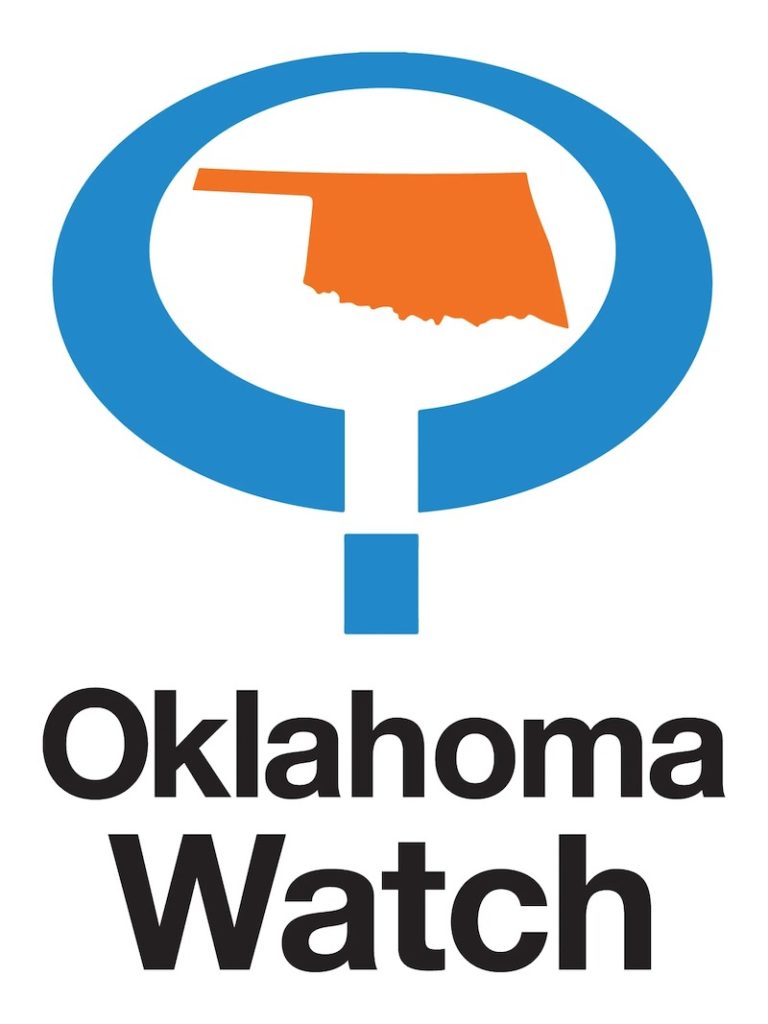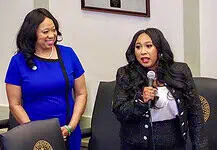OKLAHOMA CITY — Oklahoma’s reputation as a low-cost-of-living state is taking a hit after recent hikes to home insurance premiums, with lawmakers grappling for solutions after getting an earful from constituents.
Additional consumer protections are likely to be introduced for the 2026 legislative session after interim studies in the House and Senate in the past month. At least one GOP gubernatorial candidate, now-Attorney General Gentner Drummond, has expressed his concerns with rising homeowners insurance rates.
More severe weather events, inflation, rising property values and higher construction material costs have combined to push Oklahoma homeowner insurance rates to among the highest in the nation. But critics also point to Oklahoma’s hands-off regulatory environment as a factor.
Some, including Oklahoma Insurance Commissioner Glen Mulready, earlier said Oklahoma’s frequent hailstorms contributed to higher rates. But an Oklahoma Watch investigation in May found hail prevalence was below that in nearby states with lower homeowners insurance rates.

Mulready appeared before lawmakers on Sept. 30 and Oct. 7. He said his goal as a regulator is to make sure Oklahoma’s insurance market remains competitive. Mulready pushed back on claims that the top four insurance companies controlling more than 60% of the homeowners market meant it wasn’t competitive.
Rep. Andy Fugate, D-Del City, said insurance isn’t comparable to other consumer products such as clothes or groceries because homeowners are essentially buying a promise. He said consumers deserve to know how well insurance companies keep their promises.
“We have families being priced out of the protection they need to safeguard, for what is for most of them, their primary nest egg,” Fugate said at the Sept. 30 hearing. “What’s happening today is a challenge. It’s bad for Oklahoma families. It’s bad for Realtors. It’s bad for insurance agents. It’s bad for the insurance industry as a whole because Oklahomans need affordable insurance.”
Fugate said the cost of homeowners insurance in Oklahoma has reached an unsustainable level.

“Oklahoma’s exposure to severe weather does not excuse unchecked premium hikes, nor does it absolve insurers of the responsibility to operate transparently and fairly,” Fugate said. “It’s contingent on us to act decisively to restore balance and ensure affordability and to protect the right of every Oklahoman to feel safe in their home and in the products they buy to protect their home.”
In the past two decades, homeowners insurance costs outpaced median income growth, meaning it’s been harder for consumers to absorb higher rates, according to the Insurance Research Council, an industry group. Oklahoma ranked fourth, behind Mississippi, Florida and Mississippi, in the highest proportion of insurance expenditures to median income.
Another measure, by Bankrate, showed Oklahoma trailing just Nebraska, Louisiana and Florida in 2025 for the most expensive average cost of homeowners insurance for a $300,000 house. Oklahoma’s average premiums were $4,613. Nebraska was the highest at $6,366, while it was just $816 in Vermont.
Rebekah Williams, a Sulphur resident who advocates for older Oklahomans, said she recently got a renewal notice from her home insurance company that boosted her monthly premium to almost $500, up from $350. Her wind and hail deductible went to almost $10,000, up from $900. Williams said she shares homeowners’ frustrations when claims are denied.
“I don’t think it’s fair that whenever you pay your insurance and then have to have another battle to make sure they get what’s coming to you,” Williams said at the Oct. 7 Senate hearing. “It’s not right. If you have some type of major catastrophe like a tornado or flood, then you have an additional fight with an insurance company.”
Use-and-File system
The Oklahoma insurance market is a use-and-file system, which means insurers can begin charging new rates with little regulatory scrutiny. Neighboring Kansas and Texas have file-and-use systems, which allows for a little extra scrutiny, but not much, by regulators. Another 15 states, from New York and California to Alabama and Louisiana, require prior approval, according to the National Association of Insurance Commissioners. Wyoming is the lone state that has an open-filing system where rates are presumed fair without regulatory intervention.
Mulready said much of the Insurance Department’s work ensures rates are non-discriminatory and the companies are financially sound to pay claims. He said it would be up to lawmakers if they want to change the regulatory regime for insurers in Oklahoma.
Mulready said more than 100 companies are licensed to write homeowners premiums in Oklahoma. Among those about 40 to 50 are active in the market. State regulators only look to see if rates are adequate, which means they aren’t too low to undercut the rest of the market and risk insolvency. If a market is deemed competitive, rates can’t be excessive, Mulready said.
“It doesn’t do anyone any good to have a really low premium and when a storm blows through, that company is out of business,” Mulready said at the Oct. 7 Senate hearing.
Mulready said the Insurance Department uses a federal Department of Justice metric called the Herfindahl-Hirschman Index to measure the competitiveness of Oklahoma’s homeowners insurance market. Since 2020, scores have averaged 1126, which is well below the threshold of even a moderately concentrated market scored at 1,500 and higher. A score of 2,500 or higher is non-competitive.

Unlike more than 30 other states, Oklahoma does not have what’s called a fair plan, an insurer of last resort if a homeowner can’t obtain insurance in the private market.
“We don’t have an availability issue,” Mulready said. “We have insurance companies that will write insurance in every segment of our state. We clearly have an affordability issue.”
Oklahoma does have a market-assistance program, which is administered by independent insurance agents. The application program helps homeowners get coverage, but it doesn’t guarantee a policy will be written.
“The company is allowed to pass on the policy, but they are only allowed to pass on one out of every four they receive,” Mulready said. “It has worked very well for us here in Oklahoma. If you’re hearing people can’t get coverage, they are choosing not to, or they are choosing not to because they can’t afford the premium.”
Mulready touted the state’s mitigation grants for homeowners, which lawmakers approved in 2024. The program, Strengthen Oklahoma Homes, started this year and offers grants to homeowners to upgrade their roofs to standards set by the Insurance Institute for Business and Home Safety.
So far, two Republicans have announced plans to run for insurance commissioner in 2026 to replace Mulready, who is term-limited. Former Sen. Marty Quinn, who owned an insurance company in Claremore until 2021, and Farmers Insurance lobbyist Chris Meredeth have organized campaign accounts.
A dip in the pool?
Mulready said the Insurance Department is working on proposed legislation to present to lawmakers for the session that starts in February. Among the options are a longer notification period, to 60 days from 30 days, if an insurer decides not to renew a homeowners policy. Others include a longer look-back period for consumers to file a claim after a storm event that caused damage.
Other states have tried more drastic options when faced with market failures. Texas insurers stopped writing wind coverage policies in some coastal areas, so the state stepped in to form a wind pool for customers. California, meanwhile, capped annual premium increases, although that’s now led to some insurers exiting or pulling back from the state’s homeowners market in the wake of devastating wildfires.
Industry-provided reports for Oklahoma show companies that offer homeowners premiums have struggled with profitability in the last several years. The metric, called a combined loss ratio, measures how much insurance companies are taking in premiums versus how much they pay in claims and expenses like marketing, claims processing and agent commissions. Notably, loss ratios don’t include gains from investment income, a key part of insurance profits.
“We know that consumers don’t like rate increases and do pressure policymakers to suppress or delay those higher prices,” Karen Collins with the American Property Casualty Insurance Association said in the Sept. 30 House hearing. “But what we’ve seen is that when government regulates directly or indirectly price controls on markets with escalating losses, it does turn those affordability challenges into an availability crisis.”
Sen. Julia Kirt, D-Oklahoma City, said she’s increasingly concerned about insurers using credit scores as a factor in homeowners insurance rates. She invited Bob Hunter, a former Texas insurance commissioner and actuary who now works with the Consumer Federation of America, to discuss consumer issues at the Oct. 7 Senate interim study.
Hunter said the theory of workable competition is another way to measure competitiveness in a state’s insurance market. Under the banner of trade secrets, insurance companies don’t typically share claims denial rates or claim resolution times.
“Insurance buyers are not willing buyers; they have to buy home insurance if they have a mortgage,” Hunter said.
Hunter said most consumers have little understanding of what goes into homeowners or auto premiums. That’s despite a barrage of insurance mascots on TV commercials.
“They are confused by unhelpful statements from Flo, Jake and that unhelpful lizard that runs around on TV because they don’t explain really anything about the product,” Hunter said. “The big problem for insurance to be competitive is market knowledge. Buyers and sellers should have enough information to make rational choices. Competition in insurance fails miserably in this area. People face the insurance market with a strange combination of feelings: boredom and fear.”

Republished in partnership with Oklahoma Watch under a Creative Commons license. Free Press publishes this report as a collaborative effort to provide the best coverage of state issues that affect our readers.
Paul Monies has been a reporter with Oklahoma Watch since 2017. He covers state agencies and public health. Call or text him at (571) 319-3289 or email pmonies@oklahomawatch.org. Follow him on Twitter at @pmonies.











